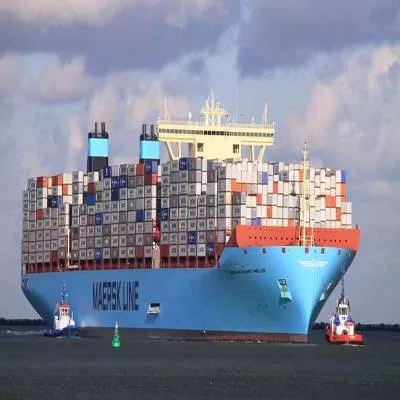

Container shipping companies like Maersk, CMA CGM and COSCO have ordered hundreds of new vessels in recent years meant to help their industry slash greenhouse gas (GHG) emissions to meet rising demand from customers and regulators around the globe. Their order books, however, reflect uncertainty over which of a wide array of so-called green fuels will become the standard in the decades to come, and whether supplies will be cheap and abundant enough to keep their fleets in motion. Decarbonising shipping is important to global efforts to fight climate change because it accounts for about 3% of global greenhouse gases, but accomplishing it will be difficult and costly, requiring billions of dollars in investments in new vessels and fuel production. The U.N.'s International Maritime Organization has set a goal to zero out shipping industry emissions by 2050, but policymakers have so far provided little in the way of support or guidance for how companies should get there, leaving the future of the market a mystery. "No single fuel or technology dominates," said Knut Orbeck-Nilssen, CEO of Maritime at Norway-based ship certifier DNV. Container shipping companies had pending orders for 522 dual-fuel new vessels as of Oct. 31, according to data from DNV. Of those, 303 are designed to run on liquefied natural gas (LNG), 216 are meant to burn methanol, two would use hydrogen, and one would be equipped to use ammonia, according to the data. Rebecca Galanopoulos, senior content analyst at maritime software and services provider Veson Nautical, said 65% of container vessel orders in 2024 were for dual-fuel engines versus just 4% in 2018. The maritime sector each year burns roughly 2.5 billion barrels of heavy fuel oil made from the cheap leftovers of gasoline, diesel and jet fuel production. Decarbonizing the entire shipping industry could cost over $100 billion per year, and double the industry's fuel prices, according to the U.N.'s Conference on Trade and Development. While the container shipping industry's 6,643 vessels account for a small fraction of the global fleet, they have an outsized impact on the climate because they travel faster and consume more fuel than other vessels, shipping experts said. Container shipping companies are now at the vanguard of the green push, having ordered more than twice the number of alternative-fuel vessels than any other cargo sector, like petroleum tankers or bulk carriers, according to DNV. In the meantime, most ships that run on conventional fossil fuel can also run on biodiesel made from used cooking oil and other products. But supplies are forecast to fall far short of what would be needed for the maritime industry. CMA CGM, which counts Walmart as a top customer, is among those that have secured some supplies. The company has notched a 50% reduction in carbon dioxide emissions per container using biodiesel, said Heather Wood, the French carrier's vice president of sustainability. At the same time, the company is adding biomethane, also known as renewable natural gas, to its fuel mix. "We're headed in the right direction. It's just going to be a portfolio of options," said Wood, who added that CMA CGM is investing $15 billion in new vessels that can run on a variety of cleaner fuels Dual-fuel LNG ships now make up the bulk of container ship orders. Despite being a fossil fuel, LNG can reduce GHG emissions up to 23% because it burns cleaner than traditional ship fuels, according to DNV.